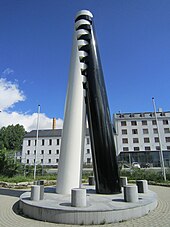European ceramic route


The European Ceramic Road (English: European Route of Ceramics ) is a European Cultural Route , which the euro Europe has been certified 2012th The route is supported by the network "UNIC" ("Urban Network for Innovation in Ceramics" = "City network for ceramic innovations") based in Limoges .
The European Ceramic Route forms a European network that connects cultural and industrial sites related to ceramic products (factories, museums, etc.). The heritage of ceramic production is to be made more accessible to the citizens of Europe. This legacy should be conveyed both physically (through the presentation of products) and by conveying production knowledge and processes.
The European Ceramic Route is both a drivable circuit and a virtual route. It is part of the world street of ceramics .
UNIC member cities and institutions
The following cities belong to the UNIC network: Aveiro ( Portugal ), Castellón and Sevilla ( Spain ), Cluj-Napoca ( Romania ), Delft ( Netherlands ), Faenza ( Italy ), Höhr-Grenzhausen ( Germany ), Limoges ( France ), Pécs ( Hungary ) and Stoke-on-Trent ( Great Britain ).
Member institutions of UNIC are the Porzellanikon Museum in Selb and Hohenberg an der Eger ( Germany ) and the Zsolnay Museum in Pécs.
Gangjin and Ichéon ( South Korea ), Jingdezhen and Tangshan ( China ) and Seto ( Japan ) also belong to the World Ceramics Road .
Web links
- Homepage of the European Ceramic Route (English text)
- City of Limoges: UNIC, the European network of ceramic cities
- Adeline Porchez: The European Route of Ceramics (English text). 17th May 2013
- Porzellanikon: CERA- DEST - Ceramic destinations for sustainable tourism (German text)
Individual evidence
- ↑ Natalie Simon: First German member for ceramic city network. Höhr-Grenzhausen is applying for a ceramic community network at European level . Westerwälder Zeitung , July 5, 2012, page 20
